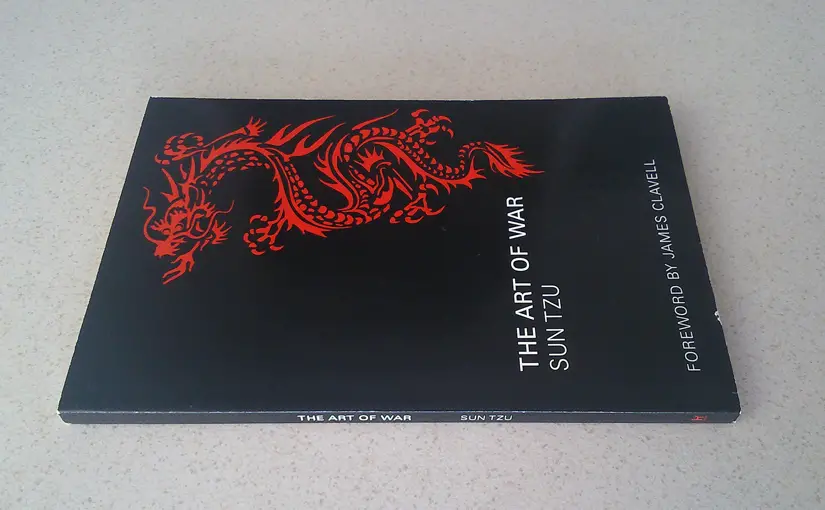I’d bet far more people have heard of this influential Chinese classic than have read it.
The military strategist to whom The Art of War is attributed is known in English as “Sun Tzu”, which I’m guessing most people pronounce like “sun zoo”, but which is actually supposed to be something more like “soon dzuh”. (The pinyin is Sun Zi, and the characters are 孙子.)
I’m a poor historian, so it’s hard for me to judge the impact of Sun Tzu’s text either on the battles of his own time or on those fought in the centuries since then. Its impact on the world of contemporary English-language publishing, however, is readily apparent thanks to the proliferation of books that bear titles such as The Art of War for Executives, The Art of War for Small Business, and even The Art of War for Dating. Surely the work that inspired all these copycats is worth a look.
The edition I read is based on the 1910 translation by Lionel Giles, and contains his notes inserted directly in the text. The notes explain or expand on the advice in more detail or give examples from world history of the situations described, showing how the advice applies in specific instances.

I found the translation suitably dignified but modern enough to sound sensible. The version I read (ISBN 9781444727364, 102 pages) was edited and has a foreword by James Clavell, author of Shogun and a series of other long, popular novels set in Asia.

Here are some links to free versions of The Art of War at gutenberg.org:
- The Art of War, translated and with notes by Lionel Giles (1910)
- The Art of War, translated by Lionel Giles but stripped of added notes (1910)
- The Book of War, translated by Captain E.F. Calthrop (1908)
(contains The Sayings of Wutzu as well as The Articles of Suntzu) - 兵法 (Bīng Fǎ) literally meaning “military tactics”
(one of the astonishingly dense-looking Chinese versions)
Click to read my post on The Art of War over at Asian Books Blog to find out what you need to know to decide whether you should bother, or how to talk about it even if you never do!
Meanwhile, China, realising that sometimes cultural products are famous for being famous, has attempted to capitalise on The Art of War by using its fame as a lure for tourists… and to buttress its image as a cooperative world power. It’s worth a try, I guess.
When and Why I Read The Art of War
Re-reading this classic for Asian Books Blog.
Genre: non-fiction (Chinese history, military strategy)
Date started / date finished: 03-Jul-17 to 14-Jul-17
Length: 102
ISBN: 9781444727364
Originally published in: 2013 (this edition)
Amazon link: The Art of War

